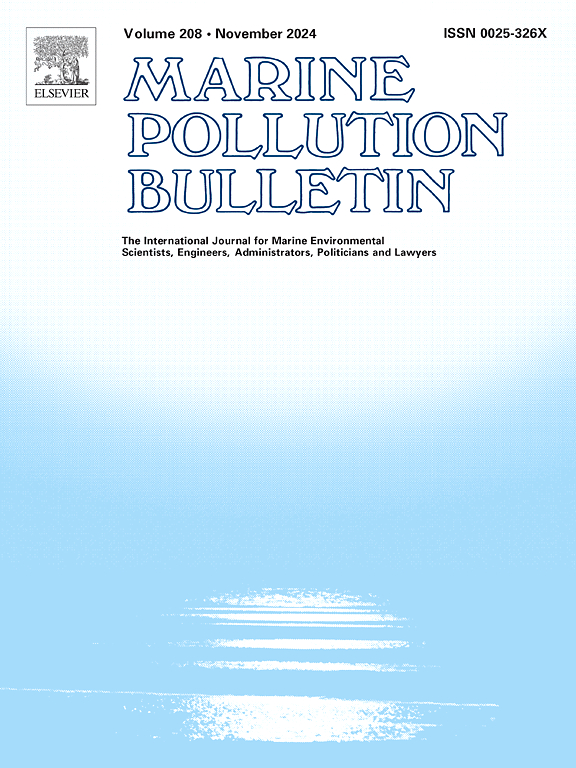Archival indicator of metal pollution in a tropical monsoon coastal region: Impact on environment and human health
IF 5.3
3区 环境科学与生态学
Q1 ENVIRONMENTAL SCIENCES
引用次数: 0
Abstract
Ample sediment and bivalves from six distinct sites along Bangladesh's southern coast were employed to assess the pervasiveness of heavy metal contamination and probabilistic human health implications. For the first time, the extent and spatial distributions of seven metals (Fe, Zn, Pb, Cr, Ni, Mg, and Cd) were determined, together with the associated risk to human and ecological health, from sediment deposition stations and bivalve dwelling sites along the coast. Fe (680.14), Zn (30.94), Pb (6.90), Cr (20.25), Ni (17.50), Mg (917.4), Cd (0.25), and Fe (632.89), Zn (192.29), Pb (0.29), Cr (0.04), Ni (0.03), Mg (201.36), and Cd (0.02) were found to have the mean concentrations (mg/kg) in sediment and bivalve, respectively. The study revealed that all the metals found in sediment and bivalves fell within the safe levels established by international and national laws. Indices and chemometrics disclosed prevalent anthropogenic interferences of hazardous inorganic metals. Despite the lack of a confirmed health concern for the Indigenous community, it is crucial to continue surveillance and implement the necessary measures in the coming year to prevent heavy metal bioaccumulation and biomagnification in Bangladesh's resource-rich, mighty coastal region.

求助全文
约1分钟内获得全文
求助全文
来源期刊

Marine pollution bulletin
环境科学-海洋与淡水生物学
CiteScore
10.20
自引率
15.50%
发文量
1077
审稿时长
68 days
期刊介绍:
Marine Pollution Bulletin is concerned with the rational use of maritime and marine resources in estuaries, the seas and oceans, as well as with documenting marine pollution and introducing new forms of measurement and analysis. A wide range of topics are discussed as news, comment, reviews and research reports, not only on effluent disposal and pollution control, but also on the management, economic aspects and protection of the marine environment in general.
 求助内容:
求助内容: 应助结果提醒方式:
应助结果提醒方式:


